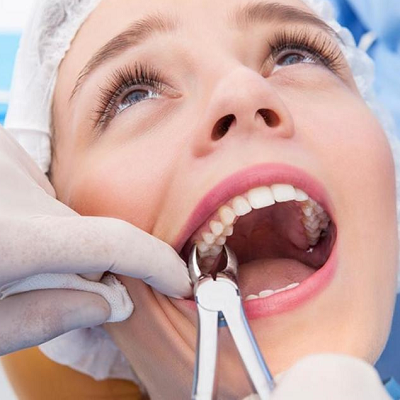Tooth extraction is a common dental procedure that many people will undergo at some point in their lives. Whether it’s due to decay, overcrowding, or injury, the thought of having a tooth removed can be unsettling. However, with the right preparation and aftercare, tooth extraction can be a straightforward process that leads to a healthier, more comfortable mouth. In this comprehensive guide, we will walk you through what to expect before, during, and after the procedure, as well as offer tips on how to heal quickly and like a pro.
Why Is Tooth Extraction Needed?
Before diving into the process and healing tips, it’s essential to understand why tooth extraction( خلع الأسنان ) might be necessary. Some common reasons for this procedure include:
1. Severe Tooth Decay
When a tooth is badly decayed and cannot be restored with a filling or crown, extraction may be the best option to prevent infection and further complications.
2. Gum Disease
In advanced stages of gum disease (periodontitis), the tooth may become loose and extraction may be necessary to maintain oral health.
3. Overcrowding
In cases of overcrowded teeth, such as before orthodontic treatment, extraction may be performed to create space for better alignment.
4. Impacted Wisdom Teeth
Wisdom teeth often become impacted, meaning they don’t fully emerge from the gums. This can lead to pain, infection, and other complications, often requiring extraction.
5. Trauma or Injury
If a tooth is severely fractured or damaged due to an accident, it may be necessary to remove it in order to prevent further complications.
What to Expect Before a Tooth Extraction
The preparation for tooth extraction is straightforward and typically involves a consultation with your dentist or oral surgeon. Here’s what you can expect during this phase:
1. Consultation and Assessment
During your initial visit, your dentist will assess your oral health and take X-rays of the affected area. This will help them determine the type of extraction required and ensure there are no underlying issues that need to be addressed beforehand.
2. Discussing Sedation Options
Tooth extractions can be done with local anesthesia, which numbs the area around the tooth, or under general anesthesia for more complex extractions. Your dentist will discuss your sedation options based on the complexity of the procedure and your comfort level.
3. Pre-Procedure Instructions
Your dentist will provide specific instructions before the extraction. This may include fasting if you will be receiving general anesthesia and possibly taking antibiotics to prevent infection.
What to Expect During the Tooth Extraction Procedure
The actual extraction process depends on the type of tooth being removed. Here’s what you can generally expect:
1. Local Anesthesia or Sedation
For most extractions, local anesthesia is administered to numb the area surrounding the tooth. You may also be given sedation if you’re feeling anxious or if the procedure is more complex.
- Simple Extraction: If the tooth is fully visible and easily accessible, the dentist will use specialized tools to loosen the tooth and remove it.
- Surgical Extraction: If the tooth is impacted or broken beneath the gum line, a surgical procedure may be necessary. This could involve making a small incision in the gum to access the tooth, and in some cases, the tooth may need to be broken into pieces for easier removal.
2. The Extraction Process
Once you are adequately numbed, the dentist will work to remove the tooth. You may feel pressure during the procedure, but you should not experience pain. The dentist may need to use forceps or other instruments to extract the tooth, and if needed, sutures may be used to close the wound.
3. After the Procedure
Once the tooth is extracted, the dentist will give you instructions for aftercare. In some cases, they may apply a gauze pad to the extraction site to help stop the bleeding. You may be given a prescription for pain medication or antibiotics.
What to Expect After Tooth Extraction: Healing Like a Pro
After the extraction, it’s essential to follow your dentist’s aftercare instructions carefully to ensure proper healing and avoid complications. Here’s what you can expect during the healing process:
1. Managing Bleeding
It’s normal to experience some bleeding immediately after the procedure. Bite down gently on a gauze pad to apply pressure and help the blood clot. If bleeding persists for more than a few hours, contact your dentist.
2. Swelling and Bruising
Swelling and bruising around the extraction site are common and usually peak within 48 hours. Applying a cold compress to the outside of your cheek can help reduce swelling. Apply the cold compress for 15 minutes at a time, with breaks in between.
3. Pain and Discomfort
Pain is normal after tooth extraction, but it can usually be managed with over-the-counter pain relievers. If you have been prescribed stronger pain medications, be sure to take them as directed.
4. Avoiding Certain Activities
To promote healing and avoid complications, avoid the following for the first few days:
- Smoking: Smoking can disrupt the healing process and increase the risk of infection.
- Drinking through a straw: Sucking can disturb the blood clot that forms in the socket, leading to a condition called dry socket.
- Eating hard or crunchy foods: Stick to soft foods to avoid irritating the extraction site.
- Excessive physical activity: Rest is important during the first few days after your procedure.
5. Taking Care of the Extraction Site
Keep the extraction site clean by gently rinsing your mouth with warm saltwater after 24 hours. Avoid vigorous swishing to prevent dislodging the clot. Continue brushing and flossing your teeth carefully, but avoid the extraction site for the first few days.
6. Follow-Up Appointments
You will likely need to return to your dentist for a follow-up appointment to ensure the extraction site is healing properly. If you had stitches, they may be removed at this time.
Potential Complications and How to Avoid Them
Although complications are rare, it’s important to be aware of potential issues that may arise after a tooth extraction:
1. Dry Socket
Dry socket occurs when the blood clot in the extraction site is dislodged or dissolves too early, exposing the bone and nerves. This can be painful and may require additional treatment. To avoid dry socket, avoid sucking motions (like drinking through a straw), smoking, and avoid touching the area with your tongue or fingers.
2. Infection
Infection can occur if bacteria enter the wound. Signs of infection include increased pain, swelling, pus, or a fever. If you suspect an infection, contact your dentist immediately. Antibiotics may be prescribed if needed.
3. Excessive Bleeding
While some bleeding is normal, excessive bleeding that does not subside can be a sign of a problem. If bleeding persists for more than 24 hours, contact your dentist.
FAQs About Tooth Extraction
1. How long does the healing process take after tooth extraction?
Typically, the initial healing phase takes about 1–2 weeks, during which the soft tissues will heal. Complete healing of the bone can take several months.
2. Can I go back to work after a tooth extraction?
Most people can return to work the day after the procedure, especially if the extraction was straightforward. However, you may want to take the day off if you had a surgical extraction or if you’re feeling unwell.
3. When can I eat after tooth extraction?
It’s best to avoid eating for a few hours after the procedure until the numbness wears off. After that, stick to soft, cool foods and avoid chewing on the side of the extraction site.
4. Can I exercise after tooth extraction?
It’s advisable to avoid strenuous physical activities for at least 48 hours following the procedure. Vigorous exercise can increase your risk of complications like excessive bleeding and swelling.
5. Is it normal to feel some discomfort after the extraction?
Yes, some discomfort is normal after tooth extraction. This can include swelling, bruising, and mild pain. Over-the-counter pain medications usually suffice to manage this discomfort.
6. What should I do if I experience dry socket?
If you suspect dry socket, contact your dentist immediately. Treatment may include cleaning the socket and placing a medicated dressing to soothe the area and promote healing.
Conclusion!
Tooth extraction may seem intimidating at first, but with the right preparation and aftercare, the procedure can be smooth and the healing process manageable. By following your dentist’s instructions and taking care of your extraction site, you can recover quickly and return to your regular activities with minimal discomfort. Remember to reach out to your dental provider if you experience any complications or have concerns during your recovery.
















Leave a Reply